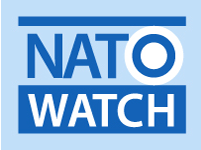Ceasefires should be part of a longer process aimed at achieving durable peace, not the endgame.
By Govinda Clayton, Mediation support manager and ceasefire expert at the Centre for Humanitarian Dialogue
This story was originally published here by The New Humanitarian on 8 July 2025.
US President Donald Trump’s announcement earlier this year that Ukraine and Russia will “immediately” begin ceasefire negotiations exemplifies a global trend: Ceasefires have become the primary focus of international peacemaking.
In Gaza, Sudan, Ukraine, and elsewhere, mediators, diplomats, and policymakers are often primarily fixated on securing tactical pauses in violence. It’s easy to see why. The intensity of today’s wars and the humanitarian crises they drive – from RSF sieges in Darfur to Israeli bombardments in Gaza – demands urgent action to reduce civilian suffering.
Sadly, this sense of urgency has given rise to a more transactional, fragmented approach to peacemaking. Ceasefires now function as the default mechanism to achieve “something” – a few days of calm, humanitarian access, a prisoner release – in the absence of credible paths toward lasting political settlement.
But these tactical approaches alone won’t address the extremely challenging global conflict landscape. Ceasefires should be part of a longer process aimed at achieving durable peace, not the endgame. When rightly framed and strategically deployed, they can create space for political solutions that otherwise feel out of reach.
This is a moment of opportunity. The global attention on ongoing catastrophic conflicts and the political capital invested in securing ceasefires create openings for long-term settlements. Ceasefires can be a first step in the conflict resolution effort. If understood as part of a broader negotiation process, they can be stepping stones toward political agreements.
What needs to be done?
Three strategic shifts can strengthen current approaches. First, treat ceasefires as processes, not one-off events. In today’s complex conflicts – from Ukraine to Sudan to Gaza – the ideal of a sweeping, comprehensive ceasefire is often out of reach. These agreements are hard to negotiate and dependent on trust that rarely exists early on. On the other hand, incremental steps that reduce violence and build confidence over time may be possible. This includes limited arrangements to protect energy infrastructure, naval deconfliction zones, or restrictions on long-range strikes.
Such early steps can then be built upon incrementally, with increasingly concrete and verifiable commitments. This gradual approach avoids the political and operational pressure of negotiating a sweeping formal ceasefire that may be both hard to agree and difficult to implement.
Of course, if a comprehensive ceasefire is within reach, mediators and diplomats would be well-advised to pursue it. When that proves difficult though, incremental approaches are worth considering.
Second, expand ceasefire negotiations to incorporate regional and international dimensions. Contemporary conflicts now rarely remain contained within national borders; they are powered by regional dynamics through arms transfers, proxy relationships, and economic interdependencies. Effective ceasefires must engage this broader ecosystem.
Libya’s 2020 ceasefire, negotiated by the United Nations with the support of the Centre for Humanitarian Dialogue succeeded largely because it engaged external actors – Türkiye, Russia, Egypt, and the UAE – whose leverage over domestic factions proved decisive. Similarly, any sustainable arrangement in Sudan, Yemen, or the Democratic Republic of the Congo will require mechanisms that address not just the national belligerents, but also security concerns across the region.
Mediators and diplomats must therefore pursue violence reduction and political engagement in parallel. That means constantly scanning for political openings – however limited – while working to stop the fighting.
Third, anchor ceasefire efforts in a longer-term political vision. Ceasefires are essential tools for reducing violence – but they cannot, on their own, resolve conflict. Without a connection to a viable political process, even well-designed ceasefires risk freezing front lines without addressing underlying grievances.
That said, in some cases, violence has been contained for decades without any formal political settlement. From Cyprus to North Korea, Moldova to Georgia, ceasefires can on some occasions be remarkably durable even in the absence of comprehensive agreements. However, while these arrangements can reduce harm and contain conflict, they are also unstable if the underlying causes remain unresolved. As seen recently in Nagorno-Karabakh, even long-standing ceasefires can unravel suddenly, reigniting violence when conditions shift.
Mediators and diplomats must therefore pursue violence reduction and political engagement in parallel. That means constantly scanning for political openings – however limited – while working to stop the fighting. In contexts like Sudan or Ukraine, this may involve shaping ceasefire design around political end-states. The goal is not to wait for perfect political alignment before acting to reduce violence, but to ensure that ceasefire processes remain tethered to a broader strategic horizon.
To be clear, ceasefires matter. In contexts where comprehensive political talks are unlikely or stalled, they may be the only available means to save lives. But what’s needed is a sustained, step-by-step process that combines violence reduction with political intent. The world needs more than silence between battles – it needs strategies that give peace a fighting chance.
The New Humanitarian puts quality, independent journalism at the service of the millions of people affected by humanitarian crises around the world. Find out more at www.thenewhumanitarian.org.
